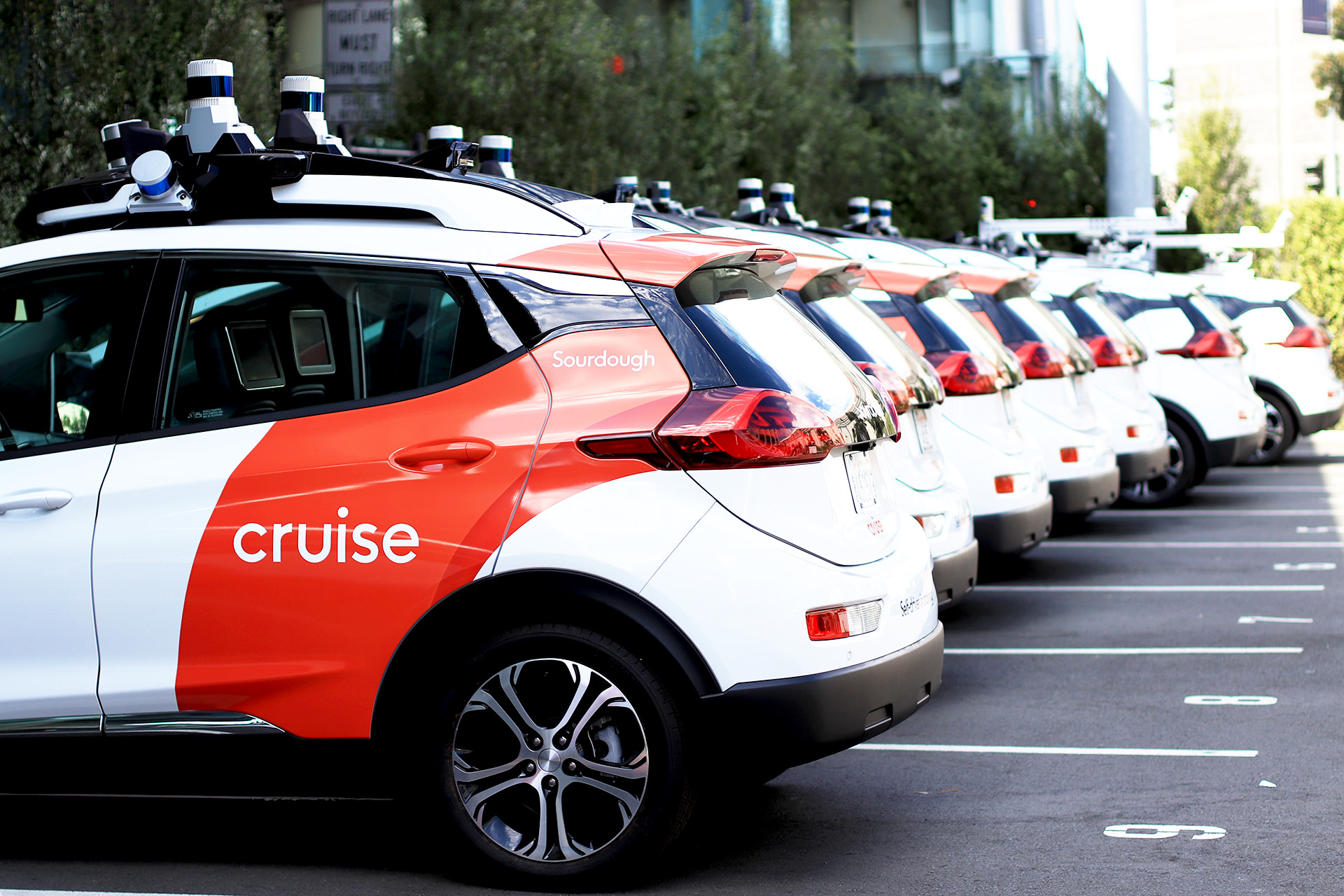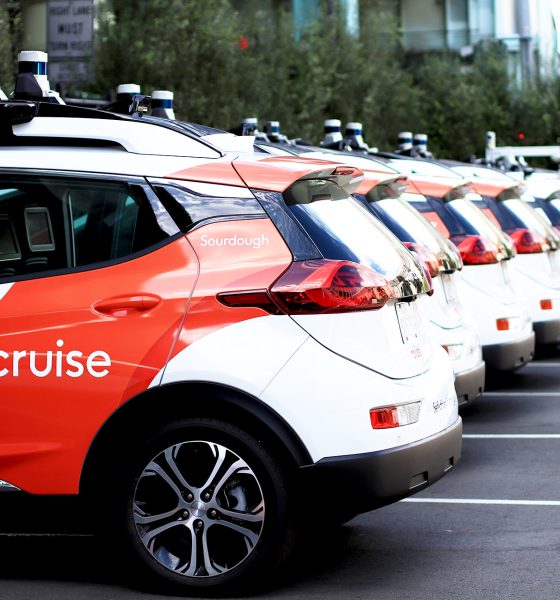General Motors (GM) has officially launched layoffs at its self-driving robotaxi business Cruise, coming just months after the automaker first announced plans to cut funding and wind down operations for the startup.
In December, GM said that it would funding and end Cruise, after the company lost its permit to operate autonomous vehicles and saw major staff shake-ups following an accident involving one of its robotaxis in October 2023. In an all-hands meeting on Tuesday, Cruise said that GM has officially acquired the remainder of the company as it starts to lay off 50 percent of its remaining staff, according to a report from The Verge.
“We are grateful for their passion and contributions to help us reach this stage, and our focus is on supporting them into their next chapter with severance packages and career support,” said Sara Autio, a Cruise spokesperson. “While not an easy decision, we are focused on combining efforts with General Motors to accelerate autonomy at scale on personal autonomous vehicles.”
With the winding down of Cruise, GM will move away from the commercial robotaxi business altogether, and instead focus on in-house driver assistance development.
“By combining the specialized technology and talent at Cruise with our team developing Super Cruise, we’ll have the ability to accelerate our work on both assisted-driving and autonomous driving,” said Dave Richardson, SVP of software and services engineering at GM. “We look forward to teaming with Cruise to accelerate our work together.”
READ MORE ON GM’S CRUISE:
- Cruise forced to boost settlement offer in California accident hearing
- Cruise ordered to pay max penalty for delayed accident report
Cruise down memory lane: the October 2023 accident and subsequent downfall
Just a couple of months after gaining approval to operate its autonomous ride-hailing service 24 hours a day in San Francisco, a Cruise robotaxi seriously injured a pedestrian who had been hit by a vehicle with a human driver on October 3, 2023. The pedestrian was plunged into the path of the Cruise vehicle by the first impact, at which point the robotaxi attempted to engage an emergency pull-over maneuver, dragging the pedestrian and eventually stopping and pinning the person under its rear axle.
Authorities arrived on scene and used the Jaws of Life to lift the vehicle off the pedestrian, before rushing them to the hospital, according to the San Francisco Fire Department.
The California Department of Motor Vehicles (DMV) immediately suspended Cruise’s permit to operate autonomous vehicles after the accident. Multiple founding executives would go on to step down from the company, and an initial round of layoffs affecting about a quarter of the company came a couple of months later.
Cruise also faced significant scrutiny over its failure to disclose certain details about its response to the accident, facing investigation efforts from the state’s DMV, the California Public Utilities Commission (CPUC) and the National Highway Traffic Safety Administration (NHTSA), which later ordered the company to pay a $1.5 million fine.
While GM spent most of last year talking up its efforts to regain public and regulatory trust and to relaunch Cruise services, the company announced plans to end funding for the business in December, citing “the considerable time and resources that would be needed to scale the business, along with an increasingly competitive robotaxi market.”
What are your thoughts? Let me know at zach@teslarati.com, find me on X at @zacharyvisconti, or send us tips at tips@teslarati.com.
Former Cruise CEO launches robotics firm with ex-Tesla AI manager
Need accessories for your Tesla? Check out the Teslarati Marketplace:

News
Waymo sues Santa Monica over order to halt overnight charging sessions
In its complaint, Waymo argued that its self-driving cars’ operations do not constitute a public nuisance, and compliance with the city’s order would cause the company irreparable harm.

Waymo has filed a lawsuit against the City of Santa Monica in Los Angeles County Superior Court, seeking to block an order that requires the company to cease overnight charging at two facilities.
In its complaint, Waymo argued that its self-driving cars’ operations do not constitute a public nuisance, and compliance with the city’s order would cause the company irreparable harm.
Nuisance claims
As noted in a report from the Los Angeles Times, Waymo’s two charging sites at Euclid Street and Broadway have operated for about a year, supporting the company’s growing fleet with round-the-clock activity. Unfortunately, this has also resulted in residents in the area reportedly being unable to sleep due to incessant beeping from self-driving taxis that are moving in and out of the charging stations around the clock.
Frustrated residents have protested against the Waymos by blocking the vehicles’ paths, placing cones, and “stacking” cars to create backups. This has also resulted in multiple calls to the police.
Last month, the city issued an order to Waymo and its charging partner, Voltera, to cease overnight operations at the charging locations, stating that the self-driving vehicles’ activities at night were a public nuisance. A December 15 meeting yielded no agreement on mitigations like software rerouting. Waymo proposed changes, but the city reportedly insisted that nothing would satisfy the irate residents.
“We are disappointed that the City has chosen an adversarial path over a collaborative one. The City’s position has been to insist that no actions taken or proposed by Waymo would satisfy the complaining neighbors and therefore must be deemed insufficient,” a Waymo spokesperson stated.
Waymo pushes back
In its legal complaint, Waymo stated that its “activities at the Broadway Facilities do not constitute a public nuisance.” The company also noted that it “faces imminent and irreparable harm to its operations, employees, and customers” from the city’s order. The suit also stated that the city was fully aware that the Voltera charging sites would be operating around the clock to support Waymo’s self-driving taxis.
The company highlighted over one million trips in Santa Monica since launch, with more than 50,000 rides starting or ending there in November alone. Waymo also criticized the city for adopting a contentious strategy against businesses.
“The City of Santa Monica’s recent actions are inconsistent with its stated goal of attracting investment. At a time when the City faces a serious fiscal crisis, officials are choosing to obstruct properly permitted investment rather than fostering a ‘ready for business’ environment,” Waymo stated.
News
Tesla FSD v14.2.2 is getting rave reviews from drivers
So far, early testers have reported buttery-smooth drives with confident performance, even at night or on twisty roads.

Tesla Full Self-Driving (Supervised) v14.2.2 is receiving positive reviews from owners, with several drivers praising the build’s lack of hesitation during lane changes and its smoother decision-making, among others.
The update, which started rolling out on Monday, also adds features like dynamic arrival pin adjustment. So far, early testers have reported buttery-smooth drives with confident performance, even at night or on twisty roads.
Owners highlight major improvements
Longtime Tesla owner and FSD user @BLKMDL3 shared a detailed 10-hour impression of FSD v14.2.2, noting that the system exhibited “zero lane change hesitation” and “extremely refined” lane choices. He praised Mad Max mode’s performance, stellar parking in locations including ticket dispensers, and impressive canyon runs even in dark conditions.
Fellow FSD user Dan Burkland reported an hour of FSD v14.2.2’s nighttime driving with “zero hesitations” and “buttery smooth” confidence reminiscent of Robotaxi rides in areas such as Austin, Texas. Veteran FSD user Whole Mars Catalog also demonstrated voice navigation via Grok, while Tesla owner Devin Olsen completed a nearly two-hour drive with FSD v14.2.2 in heavy traffic and rain with strong performance.
Closer to unsupervised
FSD has been receiving rave reviews, even from Tesla’s competitors. Xpeng CEO He Xiaopeng, for one, offered fresh praise for FSD v14.2 after visiting Silicon Valley. Following extended test drives of Tesla vehicles running the latest FSD software, He stated that the system has made major strides, reinforcing his view that Tesla’s approach to autonomy is indeed the proper path towards autonomy.
According to He, Tesla’s FSD has evolved from a smooth Level 2 advanced driver assistance system into what he described as a “near-Level 4” experience in terms of capabilities. While acknowledging that areas of improvement are still present, the Xpeng CEO stated that FSD’s current iteration significantly surpasses last year’s capabilities. He also reiterated his belief that Tesla’s strategy of using the same autonomous software and hardware architecture across private vehicles and robotaxis is the right long-term approach, as it would allow users to bypass intermediate autonomy stages and move closer to Level 4 functionality.
News
Elon Musk’s Grok AI to be used in U.S. War Department’s bespoke AI platform
The partnership aims to provide advanced capabilities to 3 million military and civilian personnel.

The U.S. Department of War announced Monday an agreement with Elon Musk’s xAI to embed the company’s frontier artificial intelligence systems, powered by the Grok family of models, into the department’s bespoke AI platform GenAI.mil.
The partnership aims to provide advanced capabilities to 3 million military and civilian personnel, with initial deployment targeted for early 2026 at Impact Level 5 (IL5) for secure handling of Controlled Unclassified Information.
xAI Integration
As noted by the War Department’s press release, GenAI.mil, its bespoke AI platform, will gain xAI for the Government’s suite of tools, which enable real-time global insights from the X platform for “decisive information advantage.” The rollout builds on xAI’s July launch of products for U.S. government customers, including federal, state, local, and national security use cases.
“Targeted for initial deployment in early 2026, this integration will allow all military and civilian personnel to use xAI’s capabilities at Impact Level 5 (IL5), enabling the secure handling of Controlled Unclassified Information (CUI) in daily workflows. Users will also gain access to real‑time global insights from the X platform, providing War Department personnel with a decisive information advantage,” the Department of War wrote in a press release.
Strategic advantages
The deal marks another step in the Department of War’s efforts to use cutting-edge AI in its operations. xAI, for its part, highlighted that its tools can support administrative tasks at the federal, state and local levels, as well as “critical mission use cases” at the front line of military operations.
“The War Department will continue scaling an AI ecosystem built for speed, security, and decision superiority. Newly IL5-certified capabilities will empower every aspect of the Department’s workforce, turning AI into a daily operational asset. This announcement marks another milestone in America’s AI revolution, and the War Department is driving that momentum forward,” the War Department noted.










